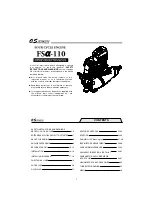
134
© Vbrick Systems, Inc.
Type
The number of video segments in a playlist is defined by the Playlist
Length. This field determines how the DME will handle the
generated segments:
• Rolling – the playlist will have a fixed length regardless of the
number of HDS segments generated. Segments will be added or
deleted to maintain a fixed playlist length.
• Appending – the Playlist Length is ignored and the DME creates
a continuously growing playlist. The maximum playlist duration is
seven days.
Note 1: Multiple appending playlists may use a large amount of disk
space unnecessarily. Use this option only if you will need to return to
the beginning of the playlist.
Note 2: The entire playlist will be deleted if you "disable" HDS
generation (on the HDS Streaming page). When the stream is active,
the playlists and associated segments can be extracted via FTP.
Playlist Length
The number of segments to include in a playlist. Default = 10. This
value is used to enable scroll back in the client player. You can scroll
back up to the number of segments specified here.
Be aware that this
function uses disk space for segments that may never be viewed.
Minimum Segment
Length
The number of seconds for which a media segment is created. Range
1–60. Default = 8. By increasing this number you will also increase
the initial time it takes to play the HLS stream. For best results, this
number should always be a multiple of the IDR Frame Interval on
the encoder. For example, if the IDR Frame Interval is 4, this value
should be 8, 12, 16 and so forth.
Latency Tuning for HLS/HDS
Latency is a common concern when delivering live content across
HLS or HDS. Latency can be tuned up or down and will impact
server load.
The Minimum Segment Length (MSL) field, as defined above, has a
big impact on latency. The system needs 3 segments to build a
playlist (even if the playlist length is greater than 3). Once that
playlist is created, players can retrieve it and begin playing. Therefore,
with the current default of an 8 second segment length, it takes 24
seconds before a playlist is created. This introduces 24 seconds of
latency. Lowering the MSL reduces latency by reducing the time to
generate the playlist; however, it creates a larger resource need on the
server. Smaller segments mean an increased number of HTTP
requests from players for more segments and playlists. It is also
important to reiterate, as noted above, if you reduce your MSL to
make sure that it is a multiple of the IDR Frame Interval from the
encoder.
Enable
Enable or disable the stream.
Status
Disabled | Waiting | Active.
Field
Description
Summary of Contents for dme
Page 1: ...Vbrick Distributed Media Engine vbrick dme v3 21 0 Admin Guide March 2019 ...
Page 12: ...xii Preface ...
Page 20: ...8 Vbrick Systems Inc ...
Page 22: ...10 Vbrick Systems Inc ...
Page 54: ...42 Vbrick Systems Inc ...
Page 156: ...144 Vbrick Systems Inc ...
Page 160: ...148 Vbrick Systems Inc ...
Page 176: ...164 Vbrick Systems Inc ...
Page 180: ...168 Vbrick Systems Inc ...
Page 194: ...182 Vbrick Systems Inc ...
Page 202: ...190 Vbrick Systems Inc http dme_ip_address HDS masterplaylistname manifest f4m ...
Page 208: ...196 Vbrick Systems Inc ...
















































